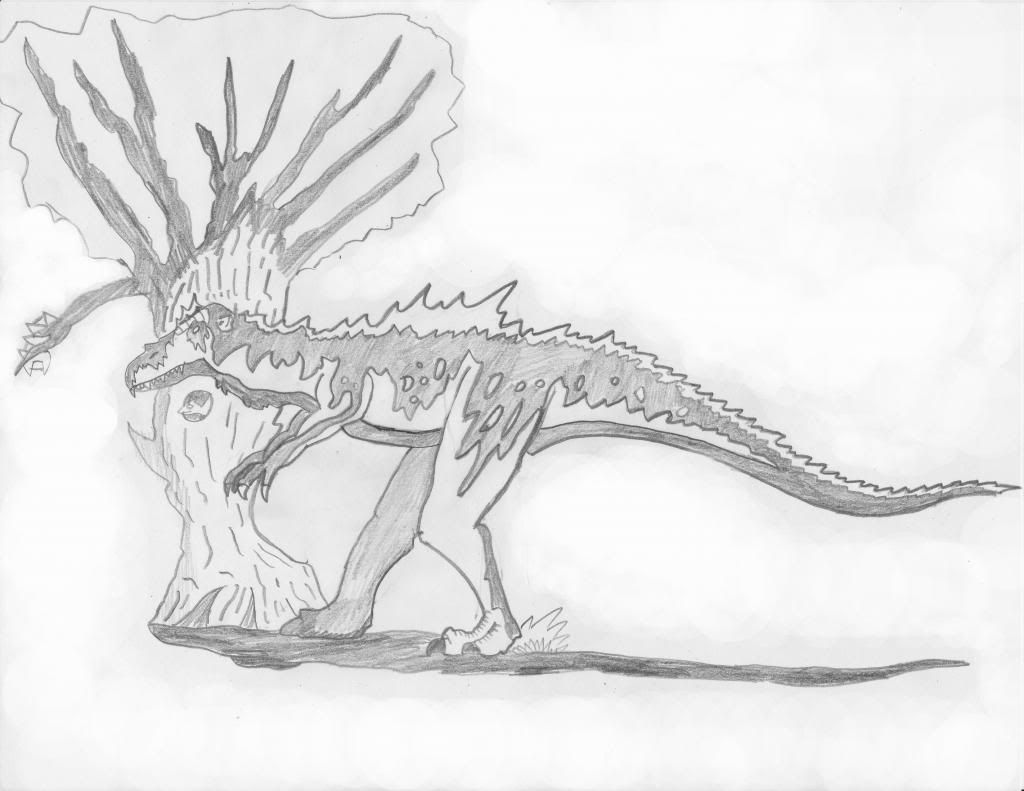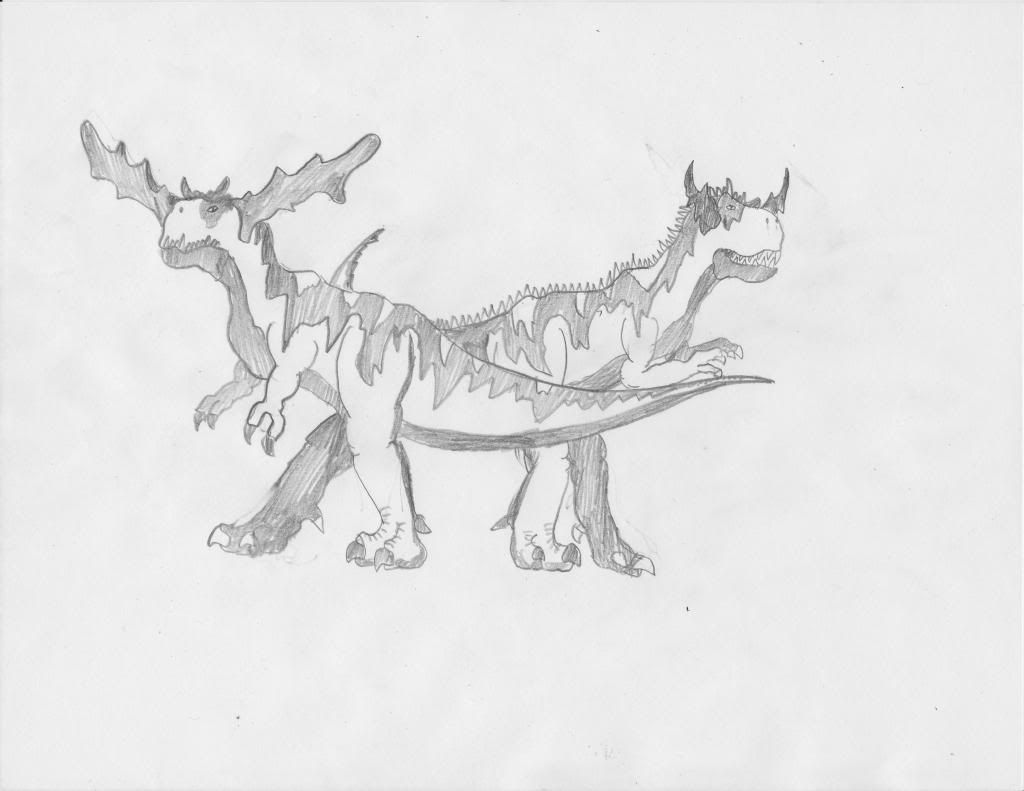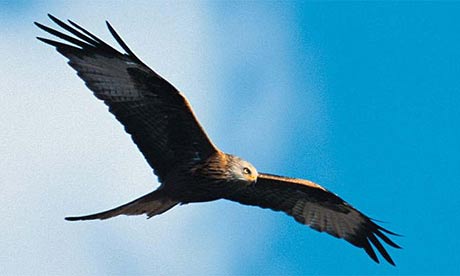|
|
Post by raptorx863 on Jun 13, 2014 20:23:42 GMT -8
In Panmundia, most of the creatures have remained virtually unchanged since their time of entering the world millions of years ago. This is due to the relatively stable conditions found on the planet, which have kept many of its species from evolving much at all, even after such a long time. However, there are exceptions... Some rare groups have morphed into new niches in this world and taken on new shapes. These new morphs can range from humans with overly pointy, elf-like ears, to whole new lineages of giant, bulk-feeding herbivorous carcharodontosaurids that occupy only a few forests of the world.
You can even propose your own species of creature that evolved from within Panmundia. As long as the creature isn't too preposterous and doesn't break the laws of nature, it can enter this world as well. This thread is made to express those ideas. Feel free to propose species ideas in here. The outline below is a basic guide to how you can make the outline.
Scientific Name
Average size in meters (Size in feet), Average weight in tonnes/kilograms (Weight in pounds)
ANATOMICAL CHARACTERISTICS (What characteristics makes your species unique?) AGE (When the animal first appeared on Panmundia relative to Earth's time periods?) CLASSIFICATION (What is this creature most closely related to?) DISTRIBUTION/HABITAT (Where is this creature typically found in Panmundia?) BEHAVIOR/HABITS (How do these creatures typically behave?) NOTES (Anything extra you might want to add.)
Have fun with your ideas! But as I said before, don't be too preposterous! We don't want giant monsters that shoot lasers running around...
|
|
|
|
Post by Lmpkio on Jun 13, 2014 20:45:30 GMT -8
Species: Gojirosuchus Triassicus  Color: Color: Light Green skin; Charcoal black stripes Anatomical Characteristics: Gojirosuchus has sharp spines on his back and can go at incredibly fast speeds. It can issue a deep roar, which many think is to attract mates. Otherwise, it issues high screeches. Age: It first appeared around the Mid-Triassic period Classification: A distant relative of the raucischuid family. Behavior: Gojirosuchuses are usually solitary creatures and prefer to live alone. They rarely hunt in packs and usually come together during mating season (which is in the Summer time). These are also very shy creatures and usually avoid human presence, only fighting back when scared or cornered.
|
|
|
|
Post by MafiaM16 on Jun 14, 2014 5:54:42 GMT -8
Demon Birds, Devil Birds, or Pterobirds Scientific Name: Ulama thambemaSize: Scientific Name: Ulama thambemaSize:
Height- 16-20' Length- 26-32' Wingspan- 40-50' Weight- 700-1200lbs Anatomical Characteristics: Can reach a sprint speed of up to 60 km/h and can sustain a speed of 40 km/h for several kilometers; has a pouch at the base of the throat to save and hoard food items, or even objects of importance; able to get up on its back legs to intimidate enemies and/or foes; able to glide, but only from a high elevation; dagger-like thick teeth line the edges of their long, sharp beaks; thicker bones and bulkier bodies compared to other Azhdarchids due to their more terrestrial nature; males are larger than females Age: 60 million years ago Classification:
Kingdom- Animalia Phylum- Chordata Order- Pterosauria Family- Azhdarchidae Genus- Ulama Species- U. thambemaDistribution/Habitat: Usually seen in the mountains, forested areas, and rarely can be seen within the grasslands and plains of Panmundia. Some key locations include: Bateyubatom "Great" Forest, Highlands, Misty Peaks, Telos Jungle, Turanhiya Mountains, Himeroon Mountains, Hermit Forest, Metape Rainforest, Sekumaeya Desert, Sandy Plains, Ruins Field, Wind Valley, and Aya. Behavior/Habits: Pterobirds of mountainous regions are usually seen in large groups of sometimes one hundred or more. While those within forested regions are usually solitary or live in mating pairs. The Pterobirds located in grasslands and plains regions operate in packs due to the lack of cover. Their general behavior is also location dependent with the mountainous Pterobirds the least aggressive while forest Pterobirds the most, and the grassland Pterobirds tend to be the bullies of the species.
|
|
|
|
Post by Lmpkio on Jun 20, 2014 22:27:38 GMT -8
Name: Carnoceros  Size: Size: 9 Meters Anatomical Characteristics: Males and females look different. Males have two large antlers on the side of their heads, usually ramming them into each other for mates and to scare off enemies or rivals. Females have smaller, but pointier antlars and have small spikes down their back and tail. Both have longer arms then most Abelisaurids. Age: 70 Mya Classification: Abelisaurid Habitat: Prefers to live on large plains and near a body of water, usually lakes. Behavior: Carnoceroses usually stick in pairs or in small family groups. Both are very protective of their babies, especially the females, and will do anything to protect them. Alone, they usually would leave the humans be, unless they are really, REALLY hungry for food. Only a handful of these are in various guilds, the rest are sentient. Theme:
|
|
|
|
Post by MafiaM16 on Jun 25, 2014 14:20:24 GMT -8
The Panmundian Dragons
 Scientific Name: Dracofonis maleficentSize: Scientific Name: Dracofonis maleficentSize:
Height- 14-15' (at the head) Length- 36-40' Weight- 5-6 tons Anatomical Characteristics: Capable of both regular reproduction and parthenogenesis; Large, spiked which resembles of those seen on Dracorex; mouth lined with numerous sharp teeth; also has a bone-crushing beak; small, but powerful grasping arms; large powerful legs allow it to run surprisingly quick and allows for nimble and agile movements; those seen in colder environments sport a feathery covering; keratin spikes grow on their back and tail; walks with its head held upright; they can run at a top speed of 30 kilometers an hour, but can only keep this speed up for a short amount of time; they are also omnivorous, long lifespan Age: 40 million years ago Classification: Kingdom: Animalia Phylum: Chordata Clade- Dinosauria Order- Ornithischia Family- Pachycephalosauridae Subfamily- Pachycephalosaurinae Tribe- Pachycephalosaurini Genus- Dracofonis Species- D. maleficentDistribution/Habitat: Panmundian Dragons are typically found within the most dense forests and jungles, as well as mountains. Possible locations of the species are: Acra, Furanhiya Mountains, Misty Peaks, Bateybatom "Great" Forest, Highlands, Telos Jungle, Latio Volcano Belt, Kluputios Wetlands, Jio Telado Marsh, Hermit Forest, Kunbel, and Metape Rainforest. Behavior/Habits: Panmundian Dragons are an extremely shy species and live within the most secluded places on Panmundia like mountains and dense forests and jungles. They are omnivorous, using their sharp teeth to capture prey and their beaks to help gather plant matter. They also generally live in pairs and usually make their homes within large cave systems. Its usually only at dusk or nightfall or dawn and early mornings do these creatures go out to hunt, but if a mist or blizzard moves through the surrounding area they would also come out of hiding as well, using this as their cover. Lore: Panmundian Dragons are an unknown species whom the majority of the populace of Panmundia consider to be simply myths and legends. Crazy stories of these creatures portray them with massive wings and having the ability to fly. Some even state that they can breath fire and are magical beings and are able to move in and out of view and disappear like a spirit and/or a ghost. The most famous story of the Panmundian Dragon is one that involved a human knight of the Armoured Knights. A bounty was placed on one of these creatures, stating that it had been killing a farmers life stock in the night. Doubtful of such a case due to the description given of the creature, the knight however was curious and soon decided to do this quest himself. He was joined with his partner, a large stallion. The two then took off towards the Misty Peaks. A trip that would take many weeks, but eventually they would arrive and the two began searching. It would be awhile until any sign of said creature was found. A set of small footprints in the soil, fresh ones at that. After a day or two of following the tracks and the signs left behind, the creature was found. From the knight's description he too used the word d ragon to describe it.. However, the knight was soon spotted and the creature took off! The knight and horse gave chase and soon cornered the creature whom had slipped and fell. As the knight was about give the killing blow to the creature, a roar was heard nearby. Stopped dead in his tracks the knight began to look in all directions, trying to figure out where the roar came from. Soon, out of nowhere, he was sent off the horse! Hit by what he said was the adult, the parent of the creature he was about slay! The adult creature killed the horse and gave a warning cry to the knight! The knight simply ran and ran, away from the angry adult... They are many more stories and tales of these creatures like seeing dragon-like shapes in the mist, blizzards, darkness and rain. Some even said they have been mock charged by them, but none are as famous as the one above which is known as: Knight George and the Dragon.
|
|










